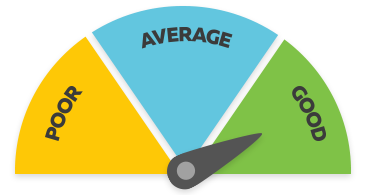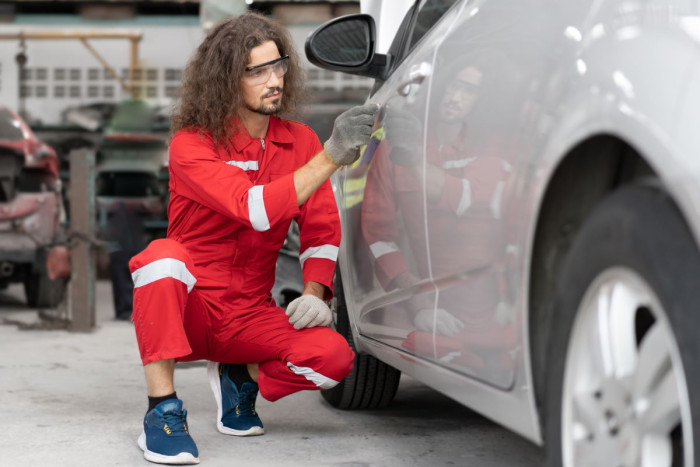Collision Repair Technician
Kaihangarau Tinana Waka
Alternative titles for this job
Collision repair technicians repair and replace damaged body parts of cars and other vehicles.
Pay
Collision repair technicians usually earn
$60K-$75K per year
Source: Seek and Trade Me, 2023
Job opportunities
Pay
Pay for collision repair technicians varies depending on qualifications and experience.
- Apprentices may start out on the training minimum wage, the minimum wage, or a little more.
- Panel beaters usually earn $60,000 to $75,000 a year.
- They may receive other benefits.
Very experienced collision repair technicians or those running their own business may earn more than this.
For those who are self-employed, income depends on the success of their business.
Source: Seek, 2023; and Trade Me, 2023.
- PAYE.net.nz website - use this calculator to convert pay and salary information
- Employment New Zealand website - information about minimum wage rates
(This information is a guide only. Find out more about the sources of our pay information)
What you will do
Collision repair technicians may do some or all of the following:
- talk to customers about vehicle repairs, and estimate costs
- remove and replace parts to access repairs, or to allow for painting
- align and reshape damaged panels and frames
- carry out structural repairs using a chassis machine and 3D measuring equipment
- replace sections of vehicles and weld in replacements following manufacturers' instructions
- repair rust
- sand and prepare panels and parts for spray painting
- spray paint panels.
Skills and knowledge
Collision repair technicians need to have:
- knowledge of metals and vehicle parts
- skills in repairing, fitting and preparing vehicle panels and frames
- an understanding of mechanics
- some knowledge of spray-painting techniques.
Collision repair technicians who run their own businesses need small business skills.
Working conditions
Collision repair technicians:
- usually work regular business hours
- work in paint and collision repair workshops
- work in conditions that may be noisy and fumy, so they need to use protective equipment.
What's the job really like?
Collision repair technician video
Rebecca explains her job as a collision repair apprentice – 1.19 mins. (Video courtesy of MTA)
[I do] panelbeating – lots of of bogging, stripping, full-on repairs, cut, weld.
I also even help out the painters a bit, help out the glass guys too and the auto-sparkies, so you do get a nice variety being the apprentice.
It's absolutely different every single day – you'll never get the dents the same, you'll never get the the same kind of car, never the same strip – it's really good.
So there is a lot of theory work to do for the apprenticeship – you really have to put your head into it. It doesn't help if you can do all the work but not have the piece of paper to show for it, you know?
Opportunities for women? It's a great opportunity – it's well worth it.
I plan to go learn how to air-brush, do some old-school cars, you know some hot rods, paint some dragsters!
I do wake up in the morning going, "Yep! I'm happy to go to work today." It is awesome.
Entry requirements
There are no specific requirements to become a collision repair technician. However, a New Zealand Certificate in Collision Repair may be useful.
To become a qualified collision repair technician you need to complete an apprenticeship and gain one or both of:
- New Zealand Certificate in Collision Repair and Automotive Refinishing (Level 3)
- New Zealand Certificate in Collision Repair – Non-Structural Repair (Level 4).
MITO oversees collision repair technician apprenticeships.
Secondary education
No specific secondary education is required for this job, but many employers prefer apprentices to have at least three years of secondary education. Useful subjects include maths, construction and mechanical technologies, and English.
For Year 11 to 13 learners, trades academies and the StartUp, STAR and Gateway programmes are good ways to gain relevant experience and skills.
These programmes may help you gain an apprenticeship, but do not reduce the amount of time it takes to complete it.
Personal requirements
Collision repair technicians need to be:
- motivated, responsible and honest
- careful, patient and accurate, with an eye for detail
- able to follow instructions and ask questions
- able to work independently
- good at problem solving and basic maths.
Useful experience
Useful experience for collision repair technicians includes:
- experience with, and passion for, vehicles
- spray painting
- welding
- work in an automotive industry trade such as automotive engineering
- car grooming
- metal fabrication or car restoration
- sheet metal work.
Find out more about training
- MITO
- 0800 882 121 - www.mito.org.nz
What are the chances of getting a job?
More cars means higher demand for collision repair technicians
Demand for collision repair technicians is expected to grow due to:
- an increase in car ownership rates and in crashes, which then require the services of collision repair technicians
- not enough people completing apprenticeships in collision repair.
There aren't enough collision repair technicians to meet demand and employers find it difficult to get staff.
As a result, panelbeater (collision repair technician) will appear on Immigration New Zealand's Green List from March 2024. This means the Government is actively encouraging skilled collision repair technicians from overseas to work in New Zealand.
According to the Census, 3,111 collision repair technicians worked in New Zealand in 2018.
Types of employers varied
Most collision repair technicians work for:
- specialised collision repair workshops
- general automotive workshops that deal with cars, boats and trucks
- motor vehicle dealerships such as Ford or Toyota.
About 17% of collision repair technicians are self-employed, and 11% employ other staff.
Sources
- 1 News Now, 'The Industry's Still Tarnished with that Dirty Brush – Panelbeaters Cry Out for Apprentices', January 2017, (www.tvnz.co.nz).
- Immigration New Zealand, 'Changes to Immigration Settings Announced, '23 September 2023 (www.immigration.govt.nz).
- Ministry of Business, Innovation and Employment, '2006-2014 Occupation Data' (prepared for Careers Directorate – Tertiary Education Commission), 2016.
- Pritchard, N, general manager, Collision Repair Association, Careers Directorate – Tertiary Education Commission interview, October 2017.
- Stats NZ, '2018 Census Data', 2019.
(This information is a guide only. Find out more about the sources of our job opportunities information)
Progression and specialisations
Collision repair technicians may progress to set up their own business, or become assessors, tutors, or estimators.
Some collision repair technicians specialise in a particular aspect of the job, such as body work or painting.
Last updated 27 March 2025


